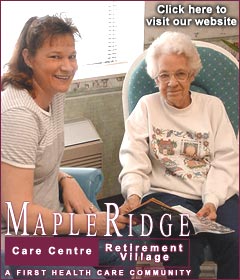|
Stan Changnon headed the project, and
the chief emeritus of the Water Survey recalls: "The immediate
significance of detecting the hook echo was the hope of using radar
to provide better tornado warnings. Over the past half-century radar
technology has improved greatly and has been adopted by weather
services throughout the world. Tornado warnings using radar
technology have saved thousands of lives."
It was on the afternoon of April 9,
1953, that staff were operating the Water Survey's radar for routine
collection of rainfall data as part of a project to determine
radar's usefulness for measuring precipitation. A network of many
rain gauges had been established in east-central Illinois to provide
ground truth for radar-indicated amounts. The normal procedure was
to turn off the radar after precipitation had occurred.
Radar engineer Don Staggs and Changnon
were working at the radar, and Staggs decided to leave it on and
continue photographing radar echoes. Other key Water Survey
personnel for the project were meteorologists Doug Jones, Stuart
Bigler, Homer Hiser and Floyd Huff; head of meteorology Glenn Stout;
and Water Survey Chief Arthur Buswell.

Development, growth and movement of a
fishhook-shaped tornado echo associated with a passing thunderstorm
were observed on the radar scope and photographed in detail. This
distinct tornado echo near the southwest edge of the associated
thunderstorm contained the tornado funnel.
Although Staggs recognized the unusual
nature of the radar echo and the possibility of a severe storm,
positive identification was not made until the radar film was
developed the next day. Floyd Huff then realized that the
distinctive hook echo was the signature of the tornado reported the
previous afternoon over Champaign and Vermilion counties.
[to top of second column in
this article] |

The discovery garnered widespread
attention from the media and the scientific community and led to
further major achievements. Changnon notes that "the major
scientific significance of this 1953 discovery was that it helped
take atmospheric research in new directions. Scientists and
engineers sought to use radars to detect all forms of severe weather
but learned that radars of that era were not capable of doing so.
Thus, Water Survey staff later designed more powerful radars with
longer wavelengths, large antennas and computerization for severe
storm and rainfall measurements."
Doppler capabilities of these new
radars made it possible to measure the direction and speed of
airborne particles, a breakthrough for assessing in-cloud
development of tornado funnels and strong straight-line winds.
"A dual Doppler radar joint developed
by the Water Survey and the University of Chicago, the CHILL,
successfully detected incipient tornado funnels and hail aloft and
served as the prototype for the NEXRAD radars used today by the
National Weather Service for advance detection of tornadoes," says
Changnon.
The
Water Survey is proud of its 50-year history of weather radar
research and development. A reception commemorating the 50th
anniversary of the first radar observation of a hook echo documented
to be associated with a tornado will be at the Water Survey in
Champaign from 1 to 2 p.m. on April 8. Members of the public are
invited. A display at the Water Survey includes photographs of the
hook echo, the magnetron used, radar logbook documentation and
details about the actual tornado.
The Water
Survey also will host a special meeting of the Central Illinois
Chapter of the American Meteorological Society at 6:30 p.m. on April
10. Special guests Staggs, Stout and Changnon will discuss their
involvement and the scientific implications of that historic event.

[Illinois
State Water Survey press
release] |